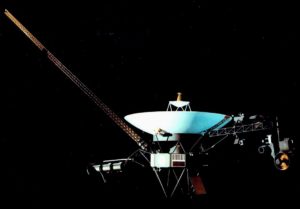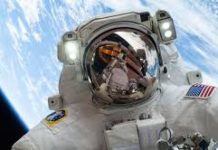 For the first time in 37 years, the Voyager 1 has fired up its backup thrusters in order to reposition itself for maximum communication efficiency with Earth. The Voyager 1 has been in outer space for decades now and throughout that time the spacecraft has been able to navigate and communicate without needing to turn to its thrusters, the use of which would end up flagging its energy usage and efficiency. The last time that the Voyager 1 sparked its backup thrusters it was mid-November in 1980 on a planetary flyby near Saturn. Almost like clockwork, NASA once again elected to fire up the thrusters in November in order to make sure that they were operating up to par for when communication efficiency would need to be maximized.
For the first time in 37 years, the Voyager 1 has fired up its backup thrusters in order to reposition itself for maximum communication efficiency with Earth. The Voyager 1 has been in outer space for decades now and throughout that time the spacecraft has been able to navigate and communicate without needing to turn to its thrusters, the use of which would end up flagging its energy usage and efficiency. The last time that the Voyager 1 sparked its backup thrusters it was mid-November in 1980 on a planetary flyby near Saturn. Almost like clockwork, NASA once again elected to fire up the thrusters in November in order to make sure that they were operating up to par for when communication efficiency would need to be maximized.
When NASA performs a large test such as firing up their TCM thrusters, the organization is taking a tremendous risk. Firing up these systems, particularly after such a protracted time between usage, means that anything could happen. However, NASA needs to weigh these risks with the reality that their systems need to be tested for usage. Fortunately, the Voyager 1 was able to pass said tests with relative ease, showing that the Voyager 1 continues to hold up well despite being the cabinet for so long. Todd Barber, an engineer at the Jet Propulsion Laboratory for NASA, said, “The Voyager team got more excited each time with each milestone in the thruster test.” Barber went on to say, “The mood was one of relief, joy, and incredulity after witnessing these well-rested thrusters pick up the baton as if no time had passed at all.”
Back in 2012 the Voyager 1 became the first human-created object to ever enter into what we know as interstellar space. This is a large part of the reason as to why NASA had to perform their thruster tests. As we pointed out above, these thrusters are required when the Voyager 1 needs to re-orient itself in order to communicate back home with Earth. And, as we pointed out above, these same tests were no sure thing. The layoff between usage was a huge problem as was the fact that these thrusters were designed to be used in short bursts for attitude control.
Still, despite the trepidation going into the tests, it appears that NASA has managed to once again surpass expectations. The Voyager 1 will continue to float toward history.





